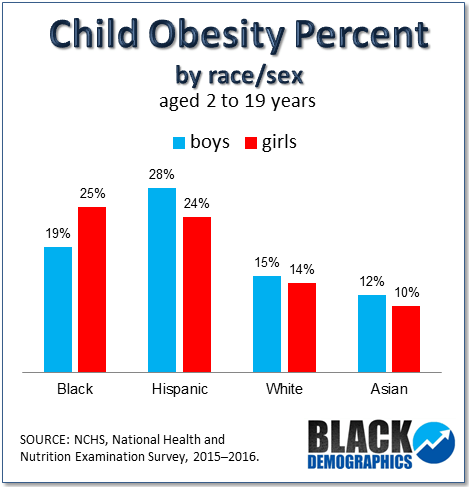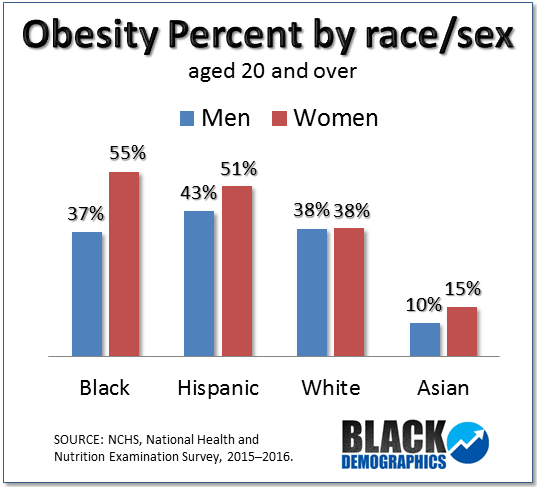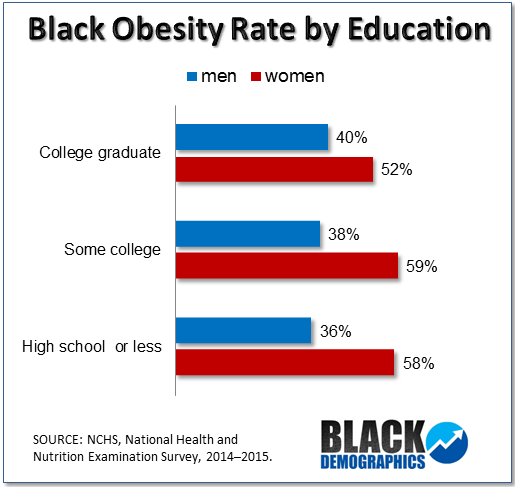Obesity in Black America

According to the CDC a person is overweight if they have a BMI (body mass index) of more than 25. Obesity begins when a person has a BMI of 30 or more. The CDC considers obesity a serious chronic disease. It increases one’s risk of developing conditions such as high blood pressure, diabetes (type 2), heart disease, stroke, gallbladder disease and cancer of the breast, prostate and colon.
African Americans have high incident rates of obesity. As a matter of fact black women have the highest rates of obesity in America. 55% (54.8) percent of Black women are obese. This number had been steadily on the increase despite the effort to bring awareness to healthy living. Unfortunately, Black culture contributes to the increase. Partly due to the Black diet which consists of many fried and fatty foods. Another factor is mainstream American culture with its prevalence of fast, prepared, and processed foods. Chemicals are added to fruits and vegetables for look, taste, and longer shelf lives. A report stated that the average tomato today has 50% of the nutrients of the average tomato in 1950.
An interesting note is that the obesity rate for Black women decreased with higher education attainment. According to the Centers of Disease Control (CDC) 58% of Black women with high school or less education are considered obese compared to 52% of Black women with a bachelor’s degree or higher. The statistics for Black men are just the opposite. Only 36% of Black men with a high school diploma or less were considered obese but 40% of Black men with a bachelor’s degree or higher are obese.

Among children ages 2 to 19 years old Hispanic boys have the highest rates of obesity at 28% while Black girls had the highest rate among other girls (25%). Asians have considerably lower obesity rates regardless of age (under 15%). White children have obesity rates closer to Asian children but While adults rates of obesity are closer to that of Black and Hispanic adults.



